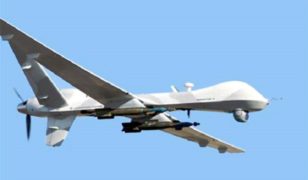AFRL posts new funding opportunity for Advanced Research and Development of Mission-Focused Analytics for a Decision Advantage (ARMADA)
 On November 12, the Air Force Research Laboratory posted a broad agency announcement for Advanced Research and Development of Mission-Focused Analytics for a Decision Advantage (ARMADA) (BAA NUMBER: BAA-AFRL-RIK-2015-0012). For consideration in FY16, the agency recommends that white papers be submitted by January 15, 2016.
On November 12, the Air Force Research Laboratory posted a broad agency announcement for Advanced Research and Development of Mission-Focused Analytics for a Decision Advantage (ARMADA) (BAA NUMBER: BAA-AFRL-RIK-2015-0012). For consideration in FY16, the agency recommends that white papers be submitted by January 15, 2016.
This Broad Agency Announcement (BAA) seeks to provide research and development for forming a revolutionary approach to information fusion and analysis by leveraging service-oriented architecture, open standards, and cutting-edge fusion and analytical algorithms to provide real-time (or near real-time) intelligence for decision makers. This BAA shall research and develop novel techniques to assist users with discovering the golden nuggets in the data – potential approaches include fusing diverse data sources, filtering noise, and leveraging pattern learning to derive patterns of life. Further, technical capabilities developed under this BAA will minimize user time spent gathering data and reporting data, while preserving and providing more time for analysis. This will be accomplished through several means to include a data framework that can easily and quickly connect to sundry data sources, a rich, intuitive personalized workspace and experience, a variety of user-defined visualization displays, machine learning to assist and automate mundane tasks, and a custom report generation tool.
This BAA will research and develop: (1) Analytic services that provide a greater understanding of diverse data sources to assist decision makers and deliver a decision advantage. This includes multi-INT and all source fusion, correlating data within and across diverse, heterogeneous data sources to determine patterns of life and indications and warnings, and project future activity in the near term;
(2) An enterprise platform that will host analytics, customizable workspaces and visualizations, a data framework for connecting to diverse and potentially heterogeneous data sources, security and authorization components, and provide a software development kit (SDK) and application programming interface (API). The intent is to develop a platform that other third parties (e.g. vendors) can leverage and implement new software components providing a much broader and deeper enterprise experience that is agile and flexible; and (3) Develop evaluation metrics and scenarios, and perform testing to ensure satisfaction of key performance parameters.The research, development, test, and evaluation (RDT&E) performed under the auspices of this BAA shall address a breadth of mission domains to include Command, Control, Communication, Computers, Intelligence, Surveillance, Reconnaissance (C4ISR) for air, space and cyber. Specific applications of this research and development include, but are not limited to:
1) Custom software infrastructure that is deployable, maintainable, and elastic; The software framework shall provide ingestion (discover, access, model), persistence, analytics, visualization, publication/reporting and system management components
2) Mission data file development to inform understanding of mission environment and provide mission decision-making parameters to inform machine observe, orient, decide, and act (OODA) loop
3) Global, user-defined common operating picture for air, space and cyber operations that can support multiple areas of responsibility (AORs) and Multi-INT feeds; custom visualizations and applications for geospatial and temporal analysis
4) Open Source Intelligence (OSINT) exploitation and analysis of social media, news feeds, and other publicly available information
5) Entity extraction and resolution within and across data sources
6) Disseminate fused air tracks and provide alerts for detected anomalies
7) Mission planning of network-enabled weapons and intelligence, surveillance, and reconnaissance (ISR) platforms
8) Machine-to-machine integration of mission planning and collection management systems across the Air Operations Centers (AOCs) and Air Force Distributed Common Ground System (AF-DCGS) sites
9) Conduct gain/loss analysis for collection management
10) Command and control of cyber forces and mission planning
11) Operational level command and control capabilities (bridging strategic to tactical-unit level) to plan, coordinate, and execute non-kinetic capabilities with kinetic means to deliver synchronized global effects
12) Provide systems engineering, integration, training and testing
13) Interface with existing programs of record to obtain access to data sources (e.g. Air Operations Center Weapons System (AOC WS), Air Force Distributed Common Ground System (AF-DCGS), Global Command and Control System-Joint (GCCS-J), Modernized Integrated Database (MIDB), Command Post of the Future (CPOF)
Full information is available here.
Source: FedBizOpps
Tags:
metered






